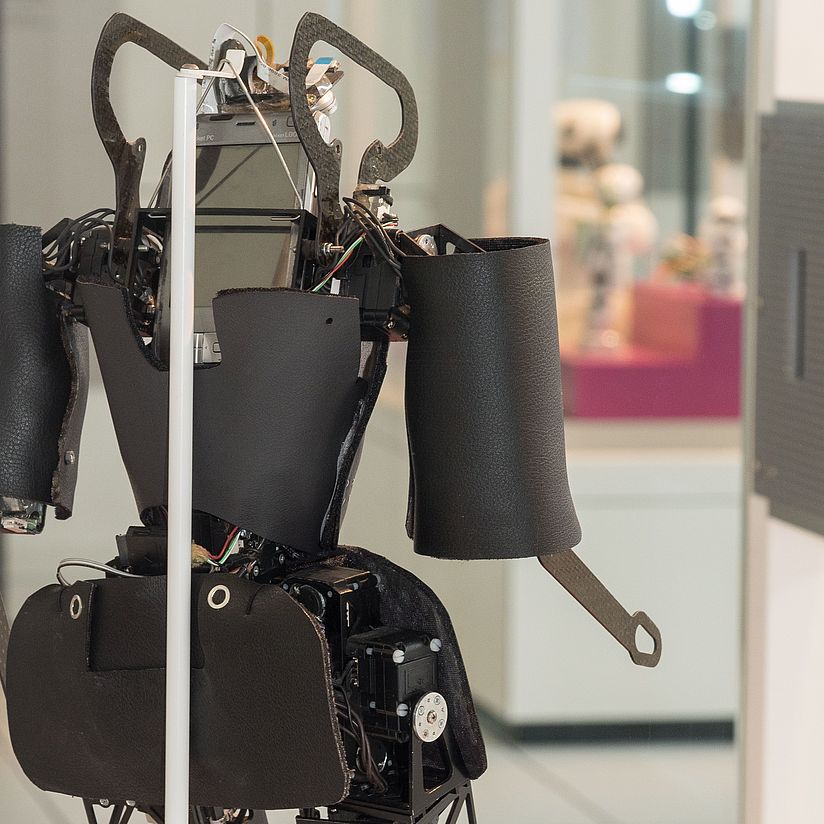
Photo: Deutsches Museum, München | Reinhard Krause Deutsches Museum
Robotics
Serving machines
Here are the robots! These are the machines that are supposed to relieve us of strenuous, dangerous or tiresome monotonous work. Mankind has been dreaming of such serving automata since ancient times. The idea is associated with hopes of greater prosperity, comfort and more humane working conditions, but also with fears of job loss, poverty and heteronomy. The term “robot” is first mentioned in literature, in Karel Čapek's science fiction drama “R.U.R Rossum's Universal Robots” from 1920. In any case, pop culture has strongly shaped our image of robots. However, most real robots have little in common with R2-D2 or the Terminator – as you can see in this exhibition.
The world of robots is bright. The narrow, dark lines that draw a grid across the floor, walls and ceiling initially create the impression of a virtual room. In fact, however, the serving machines are part of very real everyday life today: Thus, separate theme islands in the Robotics exhibition deal with the application areas of care & medicine, household, edutainment, industry and robots in extreme environments. In addition, the development and significance of machine servants are highlighted in the overarching categories of History, Art & Media, Research and Walking & Grasping. And in the midst of it all, you can see some of the collection’s gems in action in an arena. After all, “Robots are fascinating and will change our lives. We need to shape this future together,” says Frank Dittman, the curator of the exhibition, adding, “It depends on our decisions whether the use of robotics benefits people or not. It is therefore important that as many people as possible participate in the debate about pro and contra. The exhibition supports this with information.”
Facts and figures:
Location: Level 0
Exhibition area: 225 square meters
Objects: approx. 85
Demos and interactives: 6
Media stations: 16
Highlight: Arena and Demo Lab
And action! In the arena in the center of the exhibition, you can try out QTrobot or control Nao yourself using gestures. Next to it is the demonstration lab, where you can also try your hand. Here, for example, a small mobile robot can be steered over a gridded surface. You can either program the robot to move or have it move automatically. The trick is that the landscape changes and man and machine have to react.
Download the Press Release
PM_Robotics.pdf (PDF 36 MB)
